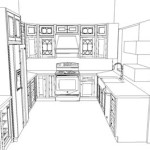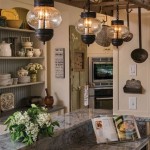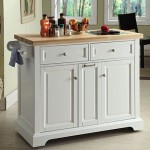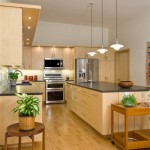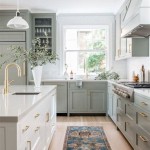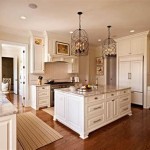Replacing Kitchen Cabinets With Shelves: A Comprehensive Guide
The decision to remodel a kitchen often involves considering various design choices, and one increasingly popular trend is replacing traditional kitchen cabinets with open shelving. This approach can transform the look and feel of a kitchen, offering a more airy, modern, and accessible aesthetic. However, it is crucial to understand the implications of such a design change before committing to it. This article will explore the benefits, considerations, and practical steps involved in replacing kitchen cabinets with shelves.
Open shelving offers several key advantages over conventional cabinetry. Visually, it can create a sense of spaciousness, particularly in smaller kitchens, by eliminating bulky, closed-off cabinets. The open design allows natural light to penetrate further into the room, contributing to a brighter and more inviting atmosphere. Furthermore, displaying dishes, cookware, and decorative items on shelves can add personality and style to the kitchen, transforming it from a purely functional space into a visually appealing one.
Functionally, open shelving provides immediate access to frequently used items. Rather than opening cabinet doors and rummaging through contents, items are readily visible and within reach. This can streamline the cooking and preparation process, making it more efficient. The ease of access also encourages more mindful use of kitchenware, as items are constantly on display and therefore less likely to be forgotten or neglected at the back of a cabinet.
However, replacing kitchen cabinets with shelves also presents certain challenges. Shelves require more frequent dusting and cleaning to maintain a tidy appearance. Items displayed on shelves are exposed to dust, grease, and splatters, necessitating regular upkeep. Moreover, open shelving is not suitable for concealing clutter. Everything is on display, so maintaining a neat and organized arrangement is paramount. This may require more conscious effort and a commitment to decluttering regularly.
Before embarking on the project of replacing kitchen cabinets with shelves, careful planning is essential. This includes assessing storage needs, selecting appropriate shelving materials, and considering the overall kitchen design. A thorough evaluation of these factors will help ensure that the new shelving system is both aesthetically pleasing and functionally effective.
Key Considerations Before Installation
Several critical factors should be considered before committing to replacing kitchen cabinets with shelves. These considerations relate to functionality, aesthetics, and the overall lifestyle of the homeowner. Failure to address these issues adequately can lead to dissatisfaction with the end result.
The first key consideration is storage capacity. Traditional cabinets offer a significant amount of enclosed storage, which is ideal for concealing less visually appealing items, such as food storage containers, appliances, and bulk supplies. Replacing these cabinets with open shelving requires a careful reassessment of storage needs. It may be necessary to supplement open shelving with alternative storage solutions, such as pantries, drawers, or freestanding storage units, to accommodate all kitchen essentials.
Another crucial aspect is the homeowner's aesthetic preferences and lifestyle. Open shelving works best in kitchens that are regularly tidied and well-maintained. If the homeowner tends to accumulate clutter or prefers a more minimalist aesthetic, open shelving may not be the most suitable choice. Similarly, if the homeowner cooks frequently and generates a significant amount of splatters and grease, the increased cleaning demands of open shelving may become burdensome. It is important to realistically assess one's lifestyle and cleaning habits before making the switch.
Finally, the structural integrity of the walls must be evaluated. Shelves, particularly those holding heavy items such as cookware or dishes, require sturdy support. It is essential to ensure that the walls are capable of bearing the weight of the shelves and their contents. If the walls are not structurally sound, it may be necessary to reinforce them before installing the shelving.
Choosing the Right Shelving Materials
Selecting appropriate shelving materials is crucial for both the aesthetic appeal and functionality of the shelving system. The choice of material will influence the overall look and feel of the kitchen, as well as the durability and maintenance requirements of the shelves.
Wood is a popular choice for kitchen shelving, offering a warm and natural aesthetic. Various types of wood can be used, each with its own unique characteristics. Solid wood is known for its strength and durability, making it suitable for holding heavy items. However, solid wood can be more expensive and may be prone to warping or cracking in humid environments. Plywood is a more affordable and stable alternative to solid wood. It is less likely to warp or crack and can be stained or painted to match the kitchen décor. Hardwoods like maple, oak, or walnut are commonly used for their durability and aesthetic appeal. Pine is a softer wood and can be more affordable but might require more care to prevent dents and scratches.
Metal shelving offers a more modern and industrial look. Stainless steel is a durable and easy-to-clean option that is resistant to rust and corrosion. Metal shelves can be particularly well-suited for holding pots, pans, and other heavy items. However, metal shelves can also feel cold and sterile, so it's important to consider how they will integrate with the overall kitchen design.
Glass shelves can create a light and airy feel, making them ideal for smaller kitchens. Glass shelves are easy to clean and can add a touch of elegance to the space. However, glass shelves may not be suitable for holding heavy items and can be prone to breakage. Tempered glass is a stronger and more durable option than standard glass.
The hardware used to support the shelves is equally important. Brackets should be chosen based on the weight they need to support and the overall aesthetic of the kitchen. Concealed brackets create a clean and minimalist look, while decorative brackets can add visual interest. Ensure that the brackets are securely attached to the wall studs to provide adequate support.
Installation Process and Best Practices
The installation process for replacing kitchen cabinets with shelves requires careful planning and execution. Proper installation is essential to ensure the stability and safety of the shelving system. While professional installation is an option, many homeowners with basic carpentry skills can successfully complete the project themselves.
The first step is to remove the existing cabinets. This typically involves disconnecting any plumbing or electrical wiring, unscrewing the cabinets from the walls, and carefully removing them from the kitchen. It is important to take precautions to avoid damaging the walls during the removal process. After removing the cabinets, patch any holes or imperfections in the walls and repaint them to prepare them for the new shelving.
Next, determine the desired placement and spacing of the shelves. Use a level to ensure that the shelves are installed straight and even. Mark the location of the wall studs to ensure that the brackets are securely attached to the studs. If the shelves are not attached to the studs, they may not be able to support the weight of the items placed on them.
Install the brackets according to the manufacturer's instructions. Use appropriate screws and anchors to ensure a secure connection. Once the brackets are installed, carefully place the shelves on the brackets and secure them with screws or adhesive, if necessary. Double-check that the shelves are level and stable before placing any items on them.
Consider the spacing between shelves when planning the installation. Taller items, like pitchers or standing mixers, will require more vertical space. Smaller items can be placed closer together. Adjustable shelving systems allow for more flexibility in adjusting the spacing as needed. Finally, consider adding lighting to the shelving system. Under-shelf lighting can improve visibility and highlight the items displayed on the shelves.
After the shelves are installed, take the time to style and organize them. Arrange items in a visually appealing manner, grouping similar items together and varying the heights and textures. Avoid overcrowding the shelves, and leave some empty space to create a sense of balance. Regularly declutter and clean the shelves to maintain a tidy and organized appearance.
In conclusion, replacing kitchen cabinets with open shelving is a transformative design choice that can enhance the aesthetic appeal and functionality of the kitchen. However, it is essential to carefully consider the storage implications, maintenance requirements, and installation process before embarking on this project. By thoroughly planning and executing the installation, homeowners can create a beautiful and functional kitchen space that reflects their personal style and meets their individual needs.

Why I Combined Open Shelves And Cabinets In My Kitchen Remodel

Of Kitchen Cabinets Open Shelves Cabinet City And Bath

10 Simple Ideas To Update Your Kitchen Cabinets Jenna Sue Design

How And Why To Combine Open Shelves Cabinets In Your Kitchen

Replace Your Cabinets With Open Kitchen Shelving San Diego Pro Handyman

Of Kitchen Cabinets Open Shelves Cabinet City And Bath

How To Remove Cabinet Doors For Open Shelving Storage In Your Kitchen Remodel Small Home Kitchens Inspirations

Open Shelving Vs Upper Cabinets In Kitchen Pros And Cons

25 Easy Ways To Update Kitchen Cabinets Hgtv

Why I Combined Open Shelves And Cabinets In My Kitchen Remodel


